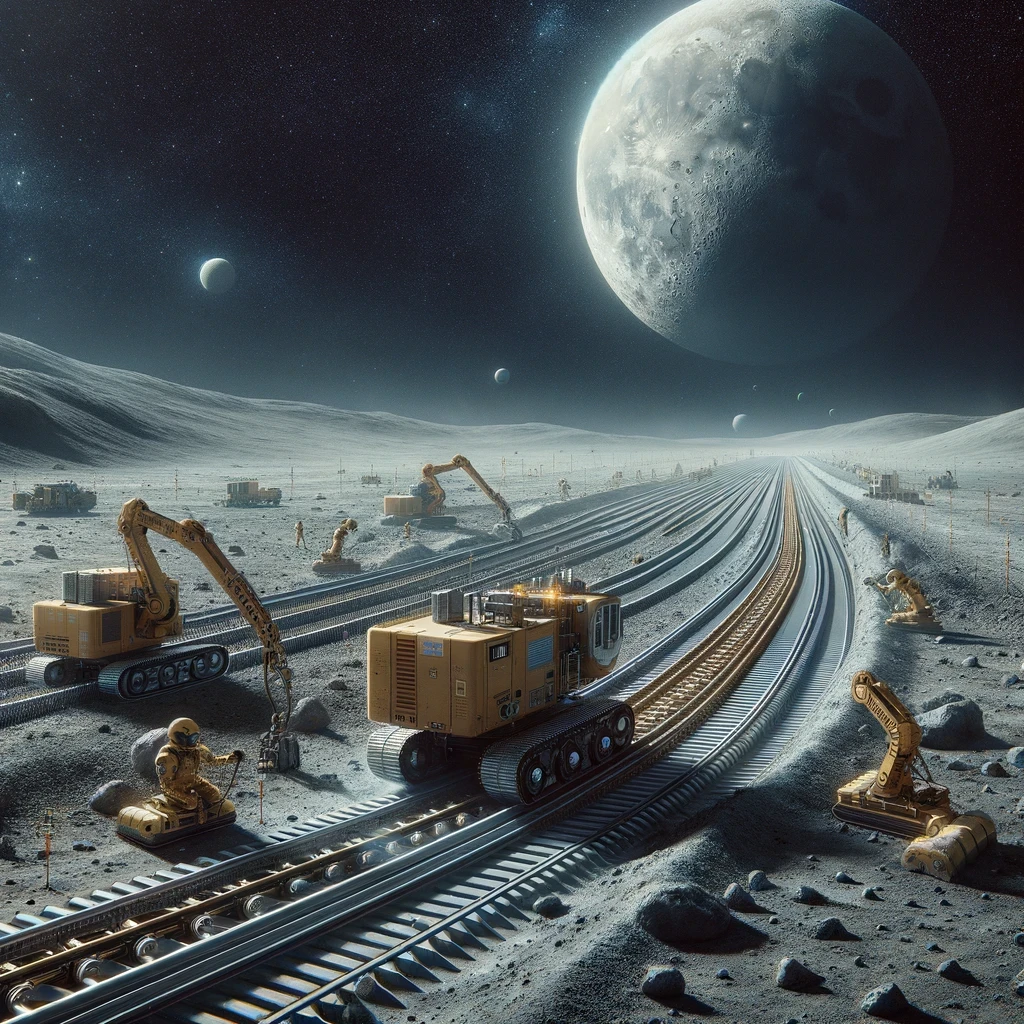"Dream, Dream, Dream! Conduct these dreams into thoughts, and then transform them into action."
- Dr. A. P. J. Abdul Kalam
"Dream, Dream, Dream! Conduct these dreams into thoughts, and then transform them into action."
- Dr. A. P. J. Abdul Kalam
22 Mar 2024
Northrop Grumman, a defense and aerospace technology company, has been selected by the US Defense Advanced Research Projects Agency (DARPA) to provide a training idea for the Moon. This, along with 14 other firms, is a part of the wider 10-year Lunar Architecture (LunA-10) Capability study presented by the research agency last December. The US intends to return men to the Moon more than 50 years after its last Apollo mission. But the goal of the future Artemis mission goes beyond simply making a moon landing. It plans to establish the Moon as an outpost and travel farther to Mars. While NASA concentrates on preparing the groundwork for a manned lunar landing, DARPA considers what would happen afterward.

( Source: Google Images )
The Project LunA-10 ~
In August of last year, a statement announcing the start of the LunA-10 project was made public. In the next ten years, DARPA anticipates a revolution in the lunar economy. The goal of the project is to find technologies that will enable lunar systems with several missions. For example, a lunar power station may send electricity wirelessly and serve as a communications and navigation center, in addition to a single purpose like an Earth power station.
The goal of the study design is to generate new technological concepts that, via collaboration, may be shared and expanded. DARPA has selected 14 businesses to be a part of the initiative by December of last year.
A New Era Of Moon Exploration Is Upon Us ~
There are several justifications for going back to the moon. Because the moon possesses a surface that is both old and pure, unlike the Earth, it can help planetary scientists understand more about the early solar system's past. Some firms wish to establish private mining operations. Travelers are eager to go snapping selfies. These things don't always make sense together, and any or all of them may come to pass. NASA plans to launch a crew of astronauts to Gateway in 2028. The company hopes to send a new team to investigate the moon's surface the following year using the first of two cutting-edge "lunar-terrain vehicles." Within ten years, humans will reside and work from a permanent, fission-powered base on the moon if all of the Artemis missions proceed as planned. Robots run by private companies will use a crowbar to sculpt the lunar surface, collecting and repurposing any material that finds utility.
The Moon Railroad ~

( Source: Google Images )
Similar to how the introduction of railroads in the 19th century boosted economic activity in the US West, the technology is anticipated to initiate and maintain economic growth on the lunar surface. Northrop Grumman's announcement makes clear the purpose of the Moon railroad system. As to a news release, "the proposed lunar railroad network could facilitate the transportation of people, goods, and resources for commercial endeavors throughout the lunar surface, thereby bolstering the space economy for both international and US partners." Northrop Grumman will only be working on a small portion of the concept at this time, such as establishing the resources and interfaces needed to construct a train network on the moon. This will assist in determining the technological and logistical risks associated with the project and provide a cost estimate, both of which are necessary before moving further. Northrop Grumman will only be working on a small portion of the concept at this time, such as establishing the resources and interfaces needed to construct a train network on the moon.
If the project has to be fully operational at some point, the military contractor will also work on identifying the prototypes and analyzing the requirements for design and architecture. The project also includes researching concepts for the building, track placement, alignment, and operation of such a system while maintaining and repairing it, because one will be operating in a very different environment from Earth. The company will also investigate the application of robots in various fields.
"Our technology is kept at the forefront of next-generation solutions through this investment in critical developmental research," said Chris Adams, Vice President of Strategic Space Systems at Northrop Grumman. "We will keep bringing about long-lasting change for a sustainable space ecosystem with our demonstrated expertise in the integration of complex systems and commercialized autonomous services." It is anticipated that the LunA-10 firms will deliver their final write-ups by June of this year and will provide further information about their work at the Lunar Surface Innovation Consortium Spring Meeting next month.
:quality(70)/cloudfront-us-east-1.images.arcpublishing.com/archetype/IZFXKU2ZM52GCQTIJJNG4RKQK5.jpg)
( Source: Google Images )